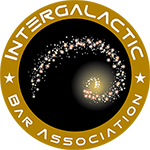An asteroid called 162173 Ryugu us a near-Earth object measuring approximately 1 kilometer (0.6 mi) in diameter. It is a dark object of the rare spectral type Cg, with qualities of a C-type asteroid and also a G-type asteroid. The current value, for mining purposes, is 82.76 billion dollars. It contains nickel, iron, water, cobalt, nitrogen, ammonia, and hydrogen. The Japan Aerospace Exploration Agency known as JAXA launched spacecraft Hayabusa2 in December of 2014 and successfully arrived at the asteroid in June of 2018. It is planned to return material from the asteroid to Earth by December of 2020. The Hayabusa2 mission includes four rovers. In September of 2018, the first two of these rovers were released from Hayabusa2.
This is a big step in Space as this is the very first time a mission has completed a successful landing on a fast-moving asteroid body. On October 3rd of 2018, the German-French Mobile Asteroid Surface Scout landed successfully on Ryugu after being released from its Japanese mothership, Hayabusa2. The Scout is about the size of a shoebox. The 22-lb. (10 kilograms) MASCOT carried four instruments: a camera, a spectrometer, a magnetometer and a radiometer. Twenty minutes after being released from the Hayabusa2, and traveling 167 feet, it reached the surface of the asteroid. JAXA noted that wheels are useless on an extremely low-gravity body such as Ryugu and a robot would float off the surface as soon as the tires started turning. The Ryugu robots were all designed to hop. MASCOT did this by manipulating a metal “swing arm” inside its body.
A photo was released the same day that captured the surface of the asteroid revealing a rocky, pitted terrain. Asteroid Ryugu was about 186 million miles from Earth at the time. MASCOT has only batteries (with a capacity of 200 watt-hours) with no independent power generation. Its life was limited from the moment of its spring-assisted release from the spacecraft. MASCOT’s battery only lasted 16 hours after the landing. The Scout detected a relatively weak field of the solar wind and very strong magnetic disturbances caused by the spacecraft. Another MINERVA lander and an impactor probe will be released in 2019, according to JAXA.
In addition to deploying the landers, JAXA’s $150 million Hayabusa2 spacecraft is designed to study asteroid Ryugu with unprecedented detail. Later this year, the U.S. spacecraft OSIRIS Rex is scheduled to make its own rendezvous with the near-Earth asteroid Bennu for NASA. That spacecraft is due to arrive at Bennu on Dec. 31 and collect samples to be returned to Earth in 2023.
